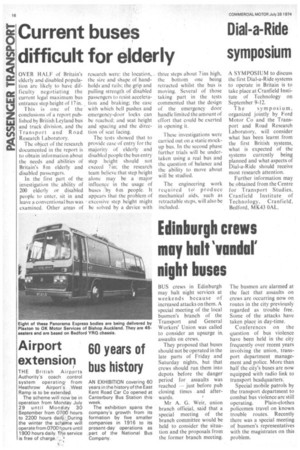Current buses difficult for elderly
Page 20

If you've noticed an error in this article please click here to report it so we can fix it.
OVER HALF of Britain's elderly and disabled population are likely to have difficulty negotiating the current legal maximum bus entrance step height of 17 in.
This is one of the conclusions of a report published by British Leyland bus and truck division, and the Transport and Road Research Laboratory.
The object of the research documented in the report is to obtain information about the needs and abilities of Britain's 8m elderly and disabled passengers.
In the first part of the investigation the ability of 200 elderly or disabled people to enter, sit in and leave a conventional bus was examined. Other areas of research were: the location, the size and shape of handholds and rails; the grip and pulling strength of disabled passengers to resist acceleration and braking; the ease with which bell pushes and emergency-door locks can be reached; and seat height and spacing and the direction of sear facing.
The tests • showed that to provide ease of entry for the majority Of elderly and disabled people the bus entry step height should not exceed 7 in; the research team believe that step height alone !nay be a -major influence in the usage of buses ; by 6m people. It appears that the problem of excessive step height might be solved by a device with three steps about 7 ins high, the bottom one being retracted whilst the bus is moving. Several of those taking part in the tests commented that the design of the emergency door handle limited the amount of effort that could be exerted in opening it.
These investigations were carried out on a static mockup bus. In the second phase further trials will be undertaken using a real bus and the question of balance and the ability to move about will be studied.
The engineering work required toi produce mechanical aids, such as retractable steps, will also be included.
































































































